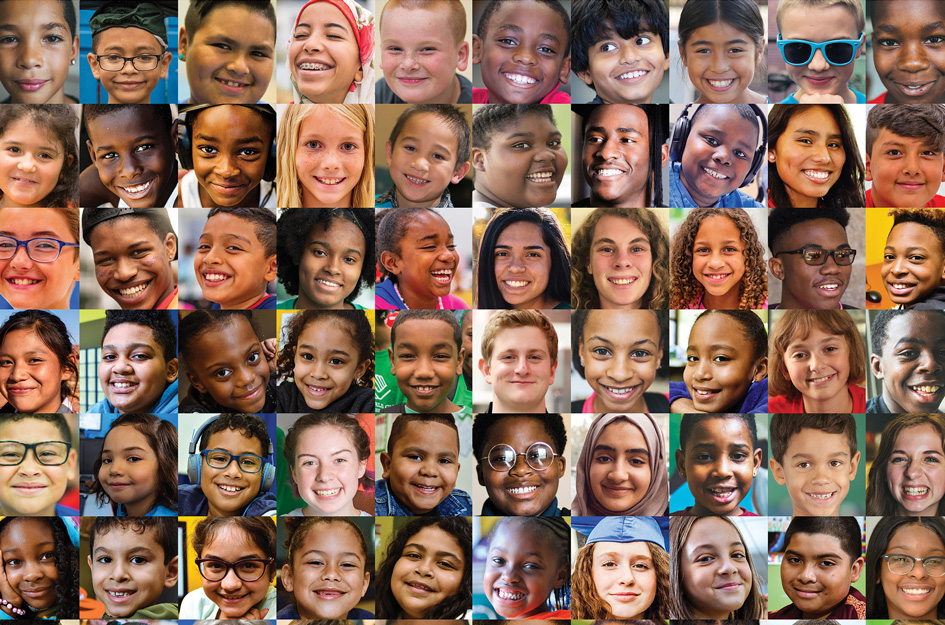

When raising and supporting young people, you can infuse the principles of Diversity, Equity and Inclusion to build welcoming, safe places where all belong.
Workplaces across the nation are defining their approach to Diversity, Equity and Inclusion (DEI). But what does DEI mean when it comes to raising and supporting kids and teens in being accepting of people from all backgrounds, cultures and experiences?
First, it’s important to understand the depth of this 3-pronged term and how each principle can require a lot of thought and effort to ensure a job well done. Whether it’s your home or a large corporation, the best way to apply DEI is to focus on one principle at a time, layering and building on these ideas to work your way up to a holistic culture of DEI.
Diversity: Seeing and accepting, without bias, all human characteristics, experiences and identities that make us unique as individuals and members of cultures and communities
Equity: Discovering, creating and providing what is required, requested and measured by each human to feel equal
Inclusion: Ensuring everyone is invited to contribute, be seen, be heard, feel valued and be counted in a way that is safe and makes sense for them
When it comes to applying DEI to youth settings, one of the best ways to do so is to create a culture of belonging. A culture of belonging naturally asks us to note and respect differences, the first step to appreciating diversity.
When your kid asks about someone’s appearance, abilities or preferences, give them an honest answer, while sharing your personal respect and appreciation for the variety that makes us all unique. Ask “what do you notice” about these differences and see what your kid is thinking – they might be curious, envious, worried or already identifying a strength in these differences. They might have heard a stereotype elsewhere and they’re seeing how you react. Be prepared to respond with candor and address stereotypes head-on, sharing more detail, historic or cultural background on such biases, as appropriate for your child’s age and understanding. Just like no one looks or acts the same, no one’s experiences or struggles are the same. When you have these conversations, it’s important to emphasize that differences not only make us vibrant and special as individuals, but stronger as classrooms, teams and societies.
Another easy way to help your kid appreciate diversity is watching shows, reading books and listening to music that features other cultures, languages and ways of life. Food can be a gateway to other cultures, helping your kid or teen understand and respect the different meals they see in the lunchroom.
Inclusion is the next step – when a young person is accepting of diversity, they’re more likely to ask a classmate or friend to join them on the playground, be part of their group assignment or come over to their house. But the most important, and sometimes the most challenging, part of inclusion is the idea that everyone’s contributions and presence are not just invited, but that they are valued. Discuss with your kid what their peers bring to the table – do they think outside the box, work really hard, have a personality that makes everything more fun? And when your kid disagrees with a peer’s contribution, do they understand where they are coming from, and how that contribution might still be helpful?
At this point, you’ve begun to foster a culture of belonging, where diversity is respected and everyone feels included. But does everyone feel addressed? That is when equity can come into play. Equity is one of the most complex issues our world is navigating, so it’s important in a youth setting to make it easy to understand and, ideally, act on: What does an individual need to feel their best and do their best? And when we meet those requests, does the group function better as a whole?
Whether it’s left-handed scissors for left-handed students, meals for kids who might not have food security at home or a teen with vision problems moving closer to see the whiteboard – the answer to the second question is usually “yes.” Just like a parent or teacher may find that a parenting or teaching strategy works for one twin but not the other twin, there is no “one size fits all” when it comes to addressing human needs, and equity is ensuring these needs are met so that the individual can thrive, and the group reaps the benefit of a thriving, contributing individual.
When raising and supporting young people, you can infuse the principles of Diversity, Equity and Inclusion to build welcoming, safe places where all belong – and, in turn, help empower respectful kids and teens who value people of all backgrounds.
Learn more about Boys & Girls Clubs of America’s commitment to Diversity, Equity and Inclusion.
We are working to ensure that who you are, where you're from or the circumstances that surround you don’t determine your access to experiences or opportunities. With your support, Boys & Girls Clubs are making that vision a reality — in your community and communities around the world.
We use cookies to enhance your experience. Learn More.
Boys & Girls Clubs of America uses cookies to give you the best experience on our website. Read about cookies in our privacy policy. By closing this message, you consent to our use of cookies on this device in accordance with our policy unless you have disabled them.